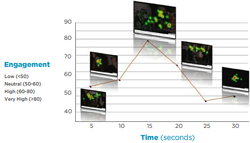I just watched Clay Shirky's presentation from Web 2.0. Jake calls it the most significant thing you’ll read/watch this year, and I'm inclined to agree. If you do just one thing with this post, watch the video. Afterward, I'll toss Clay's thoughts up in the air with the attention crash to see what happens.
Crash, or gear shift?
It's interesting to consider Clay's view in light of the attention crash/attention economy conversations that pop up so much these days. Information overload is easy to find (the chocolate factory), but when you consider how much time goes into television consumption, is it really fair to say that we're running low on attention?
Desperate Housewives essentially functioned as a kind of cognitive heat sink, dissipating thinking that might otherwise have built up and caused society to overheat.Dad always used to say that watching television would "rot your brain." Clay's suggesting that, on a societal level, it was really keeping our brains out of trouble. If we collectively were to get serious about getting our brains out of the TV and into gear, I wonder what we would accomplish?And it's only now, as we're waking up from that collective bender, that we're starting to see the cognitive surplus as an asset rather than as a crisis. We're seeing things being designed to take advantage of that surplus, to deploy it in ways more engaging than just having a TV in everybody's basement.
Attention and media companies
Economics is about allocating scarce resources, and of course we're all individually limited in the amount of attention we have. The challenge is for the businesses that are built on the cognitive heat sink. As the attention economy reallocates resources in the media market from consumption to production and sharing, is your company selling buggy whips or transportation?

